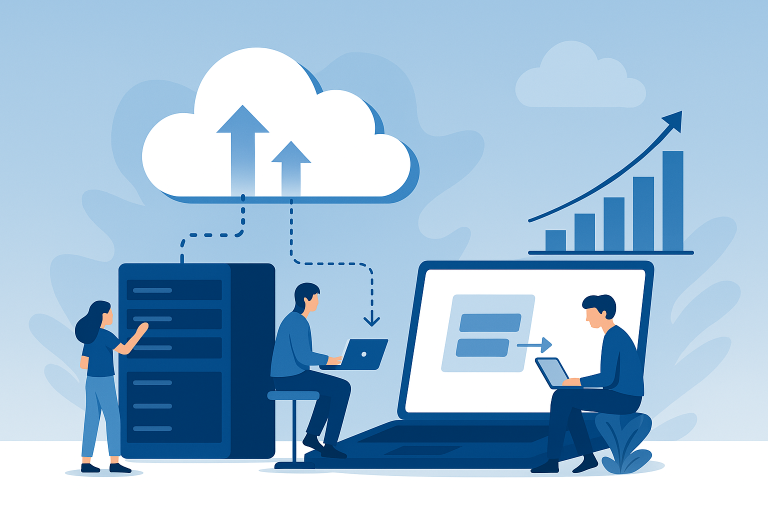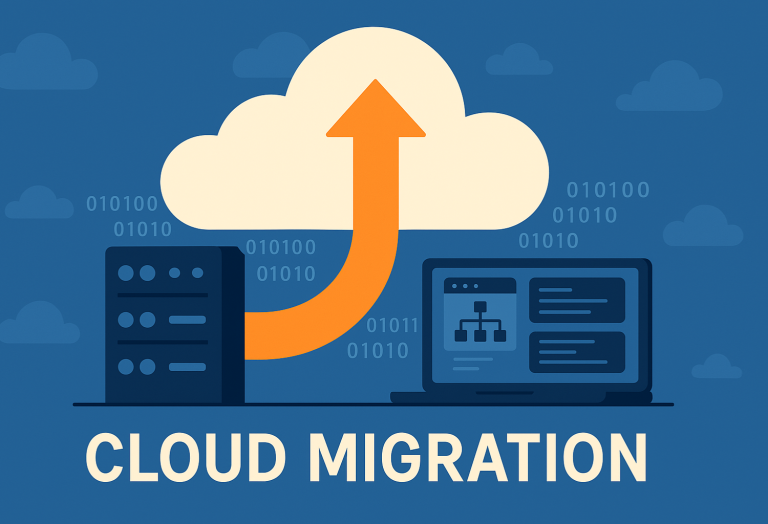
As more companies transition to the cloud, ensuring data security has become a vital component of any cloud strategy. Managed cloud services provide the flexibility, scalability, and ease of operation that businesses require, but they also introduce new security challenges. In addition to traditional methods, it’s important to keep up with the latest developments and adopt innovative solutions to safeguard sensitive information. In this discussion, we will explore different strategies for securing data in managed cloud services and examine the emerging trends that are influencing the future of data protection.
Why Data Security in Managed Cloud is Critical
For businesses today, data is more than just information – it is a vital asset. The convenience and flexibility offered by managed cloud services allow organizations to store, process, and analyze large volumes of data effectively. However, these benefits also come with potential risks if data security is not taken seriously. Safeguarding data in the cloud demands a proactive strategy to reduce the chances of breaches, ensure compliance, and protect your organization’s reputation. This post presents practical, lesser-known strategies to strengthen your managed cloud environment against emerging threats.
Best Practices for Securing Data in Managed Cloud
- Adopt a Data-First Security Model
When securing data, many organizations tend to emphasize perimeter defenses such as firewalls. While these are still important, managed cloud services greatly benefit from a data-first approach. Instead of focusing primarily on perimeter security, this strategy places data protection at the heart of your operations. By utilizing attribute-based access control (ABAC), you can customize access to data according to user roles, location, device type, and other criteria. This approach provides greater flexibility and safeguards sensitive data, reducing the risk of accidental exposure or unauthorized access.
- Implement Fine-Grained Encryption Controls
Many people know about standard encryption methods, but fine-grained encryption provides an additional layer of security for managed cloud services. Unlike traditional encryption, which often encrypts data in bulk, fine-grained encryption focuses on specific, high-value data fields such as financial records or personal identifiers. This targeted approach ensures that even if a portion of the system is breached, only certain segments of data are protected, thereby safeguarding your most sensitive information.
- Shared Responsibility Model
The shared responsibility model is essential for cloud security, highlighting that security duties are divided between the cloud provider and the customer. While cloud providers take care of the physical infrastructure, organizations must focus on protecting their data, applications, and access points. This clear separation ensures that businesses actively engage in their responsibilities, such as setting up firewalls, monitoring user access, and securing application safety, to uphold a secure cloud environment.
- Identity and Access Management (IAM)
A robust Identity and Access Management (IAM) framework is crucial for maintaining security in managed cloud environments. IAM facilitates access control through roles and identities, ensuring that only authorized personnel can reach certain data or resources. By utilizing multi-factor authentication (MFA) and following the “least privilege” principle, organizations can reduce access-related risks. This strategy not only defends against external threats but also lessens internal risks by restricting employee access to sensitive information.
- Behavioral Analytics for Continuous Risk Assessment
With the ever-evolving nature of cloud environments, behavioral analytics has emerged as a crucial tool for proactive security. By keeping an eye on typical user and system behaviors, it can quickly spot any anomalies, allowing for the identification of potential threats before they escalate. This ongoing risk assessment not only helps in preventing insider threats but also provides an extra layer of data protection in managed cloud services.
- Adopt Zero-Trust Network Segmentation
Network segmentation is a well-established strategy, but zero-trust network segmentation enhances it by implementing stringent access controls within the cloud environment. This approach mandates verification for every user, device, and application prior to granting access, thereby narrowing the access scope and preventing lateral movement across the network in the event of a breach.
- Establish a Security Operations Center (SOC) Built for the Cloud
Traditional SOCs might struggle to address threats unique to the cloud. A cloud-native SOC utilizes AI-powered incident response, proactive threat hunting, and real-time intelligence to better protect your managed cloud environment. By having a SOC tailored for cloud management services, organizations can identify and tackle potential issues more swiftly and accurately.
Emerging Trends Shaping Data Security in Managed Cloud
- Confidential Computing
Confidential computing is transforming cloud security by protecting data while it is being processed. By utilizing trusted execution environments (TEEs), companies can handle data without revealing it to other parts of the system. This benefits organizations handling sensitive cloud data by adding extra privacy during computation.
- Data Deletion Transparency
As regulations surrounding data privacy become more stringent, managed cloud services are starting to provide data deletion transparency. This helps organizations meet data deletion requests and adhere to regulatory requirements. These services ensure permanent data deletion, fostering trust and supporting GDPR compliance.
- Adaptive Data Privacy
Adaptive data privacy refers to the use of AI to flexibly implement privacy policies according to the sensitivity of the data, legal obligations, and user permissions. Monitoring and adjusting privacy settings helps reduce risks and ensure compliance with current regulations.
- Automated Compliance Audits
Maintaining compliance with global standards is becoming increasingly challenging. AI-driven audits ensure managed cloud compliance with standards like HIPAA, PCI-DSS, and CCPA through continuous monitoring. This automation not only minimizes the risk of non-compliance but also produces clear and concise reports that make the review process much easier.
- Unified Multi-Cloud Security Solutions
With the increasing number of organizations embracing multi-cloud strategies, the demand for cohesive security solutions is growing. Consolidating security policies and responses ensures easier management and uniform protection across cloud providers.
Implementing Proactive Data Security in Your Managed Cloud Environment
Effective data security is crucial for a successful cloud strategy and planning services. Best practices like data-first, zero-trust segmentation, and adaptive privacy build a strong data security framework. Cloud management services with real-time threat detection and compliance checks enhance data protection for secure, efficient operations.
Conclusion
Data security in cloud environments evolves rapidly, requiring innovative practices to tackle today’s complex challenges. Advanced security techniques help organizations safeguard data, ensure compliance, and fully leverage cloud solutions. A strong cloud strategy and planning ensure your organization navigates the digital landscape with secure, protected data.

